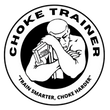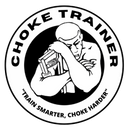From “Good” to “Better”: Recognizing When to Pivot Your Goals

Most people start a new habit or goal with fire in their eyes. You feel unstoppable at first, but over time, something changes. Progress slows. Motivation dips. You keep grinding but the results look the same. That’s the moment when many people quit—because they confuse a plateau with failure. But here’s the truth: a plateau isn’t the end of your growth; it’s a signal. It’s your mind and body’s way of telling you it’s time to pivot. Not quit—pivot. That’s the difference between staying “good” and becoming “better.”
Signs It’s Time to Pivot
-
Persistent Plateau – If you’re putting in consistent effort but seeing no progress for weeks or months, your approach may need fine-tuning.
-
Loss of Excitement – Goals should energize you. If you’re dreading the process, it might be time to adjust your methods, not abandon the mission.
-
Shifting Priorities – Life changes. A goal that made sense six months ago might not align with your current reality. Pivots allow your goals to grow with you.
-
Physical or Mental Fatigue – Sometimes burnout isn’t about working too hard, but about working in the wrong way. Pivoting allows for smarter, not harder, progress.
How to Pivot Mindfully
Pivoting doesn’t mean throwing your goals in the trash—it means making slight course corrections to keep moving forward. Here’s how:
-
Evaluate What’s Working – Don’t scrap everything. Identify the pieces of your current approach that are still effective.
-
Simplify the Path – Complexity kills consistency. Ask yourself: how can I make this process easier to sustain long-term?
-
Seek Outside Perspective – A coach, mentor, or trusted friend can see blind spots you may not recognize.
-
Redefine Success – Maybe success isn’t running a marathon right now—it’s running pain-free. Maybe it’s not losing 20 pounds, but building a sustainable nutrition plan. Success evolves, and so should your definition of it.
Why Pivoting Makes You Stronger
When you pivot, you demonstrate resilience. You’re not attached to one rigid method—you’re committed to growth. That flexibility is the real engine of self-improvement. Every successful athlete, leader, or entrepreneur has pivoted countless times. They didn’t get where they are by sticking with a broken system. They got there by adapting.
Why You Should Train Jiu Jitsu
Jiu jitsu is one of the best real-world examples of pivoting. No roll ever goes exactly how you planned. You start with a strategy, but your opponent forces you to adapt. You learn to flow, adjust, and overcome. Beyond self-defense and fitness, jiu jitsu teaches you how to stay calm under pressure and pivot with purpose. That skill translates to every area of life—your career, relationships, and personal growth. If you’re in the Huntsville, Texas area, come try a free class at Gracie Humaita Huntsville Jiu Jitsu. You’ll experience firsthand how this art can transform not just your body, but your mindset. www.graciehumaitahuntsville.com
Final Thought
Remember this: being “good” isn’t the finish line. Growth requires continual adjustment. When you learn to pivot your goals instead of abandoning them, you give yourself the chance to be better than yesterday.
If you’re also working on becoming a better leader—in your life, at work, or on the mats—I’ve written a book that might support your journey. It’s called Self Leadership, and it’s about leading yourself with discipline, clarity, and purpose before you ever try to lead others.
You can find it here: Self Leadership on Amazon

Your growth isn’t accidental. It’s intentional.

